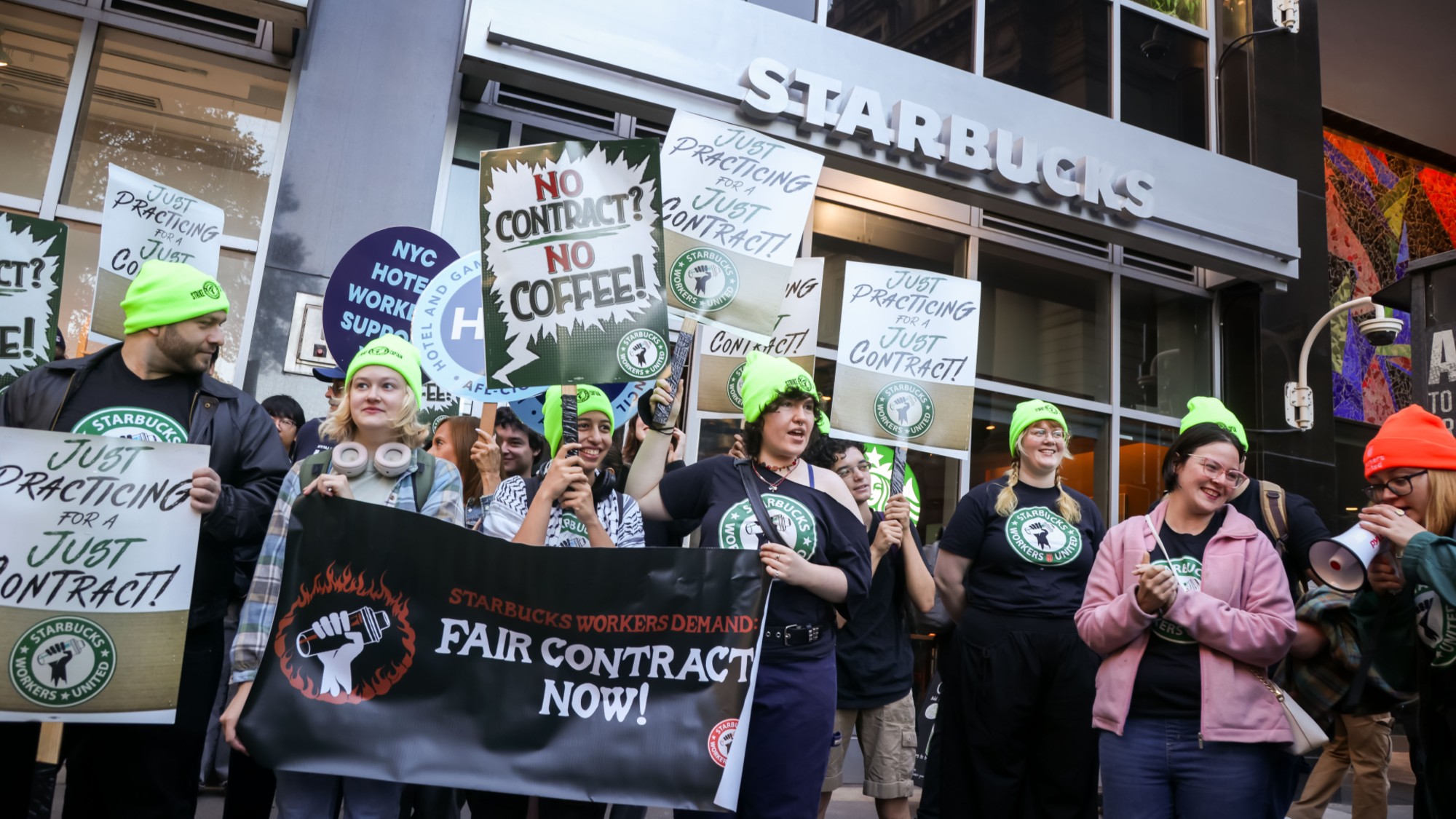2023: the year of women as economic powerhouses
Women's spending of disposable income has become a force


People have long joked about "women and their shopping."
Despite the stereotype suggesting shopping for personal needs, women’s purchasing for much of history was mostly related to the household. 78% of women identify as the primary shopper of their household, according to an April 2023 consumer study.
However, the times they are are a-changin', and data by the U.S. Government Accountability Office revealed that women currently comprise approximately half of the U.S. workforce, giving their demographic more disposable income.
This year, women have shown how substantial their role in the economy is by spending more than ever, particularly on products and services specifically made for and by them. "Instead of women making decisions about purchasing traditional goods that are in some sense a public good for the family, they're actually using their resources to purchase goods and experiences that bring them joy," Misty Heggeness, an economist and professor at the University of Kansas, told The Wall Street Journal. Here are some of the areas in which women spent most this year.
The Week
Escape your echo chamber. Get the facts behind the news, plus analysis from multiple perspectives.

Sign up for The Week's Free Newsletters
From our morning news briefing to a weekly Good News Newsletter, get the best of The Week delivered directly to your inbox.
From our morning news briefing to a weekly Good News Newsletter, get the best of The Week delivered directly to your inbox.
Entertainment
Summer 2023 brought an entertainment "Renaissance" especially targeted to women. First, the movie "Barbie" made over $1 billion at the global box office, with director Greta Gerwig being the first solo female director to achieve this record-breaking success. Then, both Taylor Swift's Eras Tour and Beyonce's Renaissance Tour sold out in every city they toured, and the singers' two fan bases largely consist of women. Along with attending the events, women also spent money to travel to the venues and plan outfits tied to the shows.
Taylor Swift's Eras Tour raked in the big bucks, with analysts expecting it to make over $4 billion in revenue by the end of the tour. This year, the Eras Tour movie was also released, earning $92.8 million in domestic theaters in its opening weekend and "cementing the film's place as the highest grossing concert film," Forbes reported. Beyonce's Renaissance Tour was the other hot event of 2023, bringing in more than $500 million in revenue. Variety predicted that the newly released movie version of the tour would also generate millions of dollars, thanks, again, in part, to women's spending.
Beauty
The beauty industry is largely dominated and supported by women. A survey by Advanced Dermatology found that women spend approximately $300 more on their appearance than men per year. Women's top spending categories are skincare, hair products, haircuts and color, all of which tend to cost more money for women than men This "pink tax," is the name given to the "discriminatory pricing that inflates the cost of goods marketed to women," Bankrate reported, and applies to anything from feminine hygiene products, razors and deodorant, to dry cleaning and luxury items.
Many of the largest beauty brands and companies also specifically advertise to women, using influencers to do so. Social media has bolstered the beauty industry, with, according to an April 2023 consumer study, 67% of beauty shoppers saying they turn to influencers to discover new products. The pandemic also increased the number of women spending on beauty products, with 22% reporting that they changed their skincare routine because of Covid-19, NPD reported.
A free daily email with the biggest news stories of the day – and the best features from TheWeek.com
Travel
Women explored the world plenty in 2023, and the number is growing. Travel provider Road Scholar reported that nearly 70 percent of all its travelers are women. And they did their travel alone: Women are opting to travel solo, including a marked increase among married women. Solo travel is projected to have "the most growth through 2027," according to Astute Analytica.
Because of the rise in solo-woman travel, there has also been a boost in demand for women-only travel groups and packages. As Forbes explained, "women are disproportionately represented in guiding and operator ownership and leadership," despite making up a higher number of travelers than men. Companies like Greether and TourRadar are actively capitalizing on the evolving market. "That unencumbered ability to seek and explore is crucial, especially for women on exhilarating journeys where independence is central," Fast Company remarked.
Fine art
Fine art has been seeing a shift in collector demographics as well. During the first half of 2023, women collectors spent a median of $72,500 compared with $59,400 by men, according to a 2023 survey. While men still hold higher average spending, "with values driven up by a few extravagant male spenders," women’s numbers have continued to rise over the past two years.
Despite women collectors taking a more substantial portion of the market, Forbes noted that "collections continue to be dominated by works by male artists, with a ratio of 61% men to 39% women." Art collections continue to be dominated by works by male artists among both men and women collectors but, "collectors who spend more than $10 million each year … tended to have a higher share of works by women in their collections."
Overall, the proportion of wealthy women’s portfolios dedicated to art collecting rose positively with the amount of wealth they held "ranging from an average of 15% for those with wealth of less than $5 million to nearly 30% for ultra-high-net-worth (UHNW) collectors with wealth of more than $50 million."
Devika Rao has worked as a staff writer at The Week since 2022, covering science, the environment, climate and business. She previously worked as a policy associate for a nonprofit organization advocating for environmental action from a business perspective.
-
 Pipe bombs: The end of a conspiracy theory?
Pipe bombs: The end of a conspiracy theory?Feature Despite Bongino and Bondi’s attempt at truth-telling, the MAGAverse is still convinced the Deep State is responsible
-
 The robot revolution
The robot revolutionFeature Advances in tech and AI are producing android machine workers. What will that mean for humans?
-
 Health: Will Kennedy dismantle U.S. immunization policy?
Health: Will Kennedy dismantle U.S. immunization policy?Feature ‘America’s vaccine playbook is being rewritten by people who don’t believe in them’
-
 How will the Warner Bros. bidding war affect the entertainment industry?
How will the Warner Bros. bidding war affect the entertainment industry?Today’s Big Question Both Netflix and Paramount are trying to purchase the company
-
 Texas is trying to become America’s next financial hub
Texas is trying to become America’s next financial hubIn the Spotlight The Lone Star State could soon have three major stock exchanges
-
 US mints final penny after 232-year run
US mints final penny after 232-year runSpeed Read Production of the one-cent coin has ended
-
 How could worsening consumer sentiment affect the economy?
How could worsening consumer sentiment affect the economy?Today’s Big Question Sentiment dropped this month to a near-record low
-
 Musk wins $1 trillion Tesla pay package
Musk wins $1 trillion Tesla pay packageSpeed Read The package would expand his stake in the company to 25%
-
 Starbucks workers are planning their ‘biggest strike’ ever
Starbucks workers are planning their ‘biggest strike’ everThe Explainer The union said 92% of its members voted to strike
-
 Warner Bros. explores sale amid Paramount bids
Warner Bros. explores sale amid Paramount bidsSpeed Read The media giant, home to HBO and DC Studios, has received interest from multiple buying parties
-
 Electronic Arts to go private in record $55B deal
Electronic Arts to go private in record $55B dealspeed read The video game giant is behind ‘The Sims’ and ‘Madden NFL’
